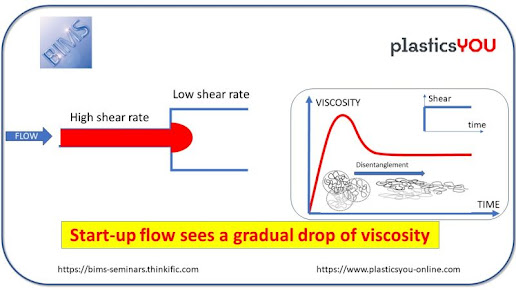3D Printed Prototypes Help Nike Design Customized Sport Shoes
In 200- and 400-meter sprints, an athlete’s control through the track’s curve can add or subtract crucial milliseconds — the difference between being crowned champion and taking second place. For gold-medal-winning American sprinter Allyson Felix, commanding this variable is just one of the many challenges integral to repeating her 2012 success. To address the challenge ahead of Rio, Felix entered into an unprecedented collaboration with Nike, comprising design and engineering research, with the aim of creating a new spike built specifically for the races’ requirements.
The Nike Zoom Superfly Flyknit unites extensive scientific analysis from Nike’s Sports Research Lab (NSRL) with computational design by the company’s designers and pixel-level stitch placement by its Flyknit engineers. Combining this data with perception testing by Felix and additional feedback from her coaches, the collective team precisely adapted the spike’s key elements of strength, fit and flex to Felix’s specifications and biomechanics — exemplified by a long, graceful, powerful stride.
To tailor the fit to the unique contours of Felix’s foot, a custom last was created specifically for Felix’s size 9.5, AA-width feet. The spike’s plate was also developed to align with Felix’s stiffness preference, a balance of flexibility and pop made possible through 3D print prototyping.
The spike’s custom Flyknit upper perfectly complements the plate’s advances by reducing volume and weight and, for the first time in a sprint spike, extending to three-quarter height, which supports a larger potion of the foot to facilitate fluidity in motion.
“One of the things that I love about the process is that I'm not an expert in this, but I have all this science behind me. This is what [Nike] does and this is what they're passionate about,” says Felix. “I can have confidence that they're going to give me the best equipment.”
Throughout the design process, Felix met with the Nike team over a dozen times — from the first fitting in May 2014 to a recent final wear test in Los Angeles. 30 versions of spike’s plate were produced and the Flyknit upper was tweaked over 70 times before the team felt secure they’d landed on Felix’s pinnacle personalized solution.
This level of prototyping is made possible through advance manufacturing techniques; SLS (Selective Laser Sintering) 3D printing reduces sampling time from weeks to days. The rapidity facilitates immediate feedback, quick iteration and, fundamentally, enables a better final product for the athlete.
“Our role in the Innovation Kitchen is to invent the future of performance innovation for athletes. We do that with a mission to make athletes better. In this work with Allyson, the product that has been created is making her measurably better,” confirms Tony Bignell, VP Footwear Innovation, Nike. “We’re seeing faster times in practice, more efficiency through and exiting the curb as well as unprecedented feedback from Allyson. We cannot wait to see how she performs in the spike throughout the coming months.”
Source: Nike
| Fig. 1: Nike |
The Nike Zoom Superfly Flyknit unites extensive scientific analysis from Nike’s Sports Research Lab (NSRL) with computational design by the company’s designers and pixel-level stitch placement by its Flyknit engineers. Combining this data with perception testing by Felix and additional feedback from her coaches, the collective team precisely adapted the spike’s key elements of strength, fit and flex to Felix’s specifications and biomechanics — exemplified by a long, graceful, powerful stride.
To tailor the fit to the unique contours of Felix’s foot, a custom last was created specifically for Felix’s size 9.5, AA-width feet. The spike’s plate was also developed to align with Felix’s stiffness preference, a balance of flexibility and pop made possible through 3D print prototyping.
| Fig. 2: 3D Printed Prototypes Help Nike Design Customized Sport Shoes |
The spike’s custom Flyknit upper perfectly complements the plate’s advances by reducing volume and weight and, for the first time in a sprint spike, extending to three-quarter height, which supports a larger potion of the foot to facilitate fluidity in motion.
“One of the things that I love about the process is that I'm not an expert in this, but I have all this science behind me. This is what [Nike] does and this is what they're passionate about,” says Felix. “I can have confidence that they're going to give me the best equipment.”
Throughout the design process, Felix met with the Nike team over a dozen times — from the first fitting in May 2014 to a recent final wear test in Los Angeles. 30 versions of spike’s plate were produced and the Flyknit upper was tweaked over 70 times before the team felt secure they’d landed on Felix’s pinnacle personalized solution.
This level of prototyping is made possible through advance manufacturing techniques; SLS (Selective Laser Sintering) 3D printing reduces sampling time from weeks to days. The rapidity facilitates immediate feedback, quick iteration and, fundamentally, enables a better final product for the athlete.
“Our role in the Innovation Kitchen is to invent the future of performance innovation for athletes. We do that with a mission to make athletes better. In this work with Allyson, the product that has been created is making her measurably better,” confirms Tony Bignell, VP Footwear Innovation, Nike. “We’re seeing faster times in practice, more efficiency through and exiting the curb as well as unprecedented feedback from Allyson. We cannot wait to see how she performs in the spike throughout the coming months.”


Comments
Post a Comment